RIYADH: As the sun descended on Riyadh, the night became the star of the show at the Saudi Arabian Museum of Contemporary Art’s latest exhibition “In the Night.”
The showcase is an ode to the mysteries, possibilities, and intricate dimensions of darkness and the contemporary art practices surrounding different phases of the night.
Curated by Geraldine Bloch, it features over 30 artists from across the globe including France, Morocco, Tunisia, India, Japan, Argentina Pakistan, Croatia, Australia, and the UK, all brought together by the intricacies of their practice and their shared bond over the nocturnal landscape.
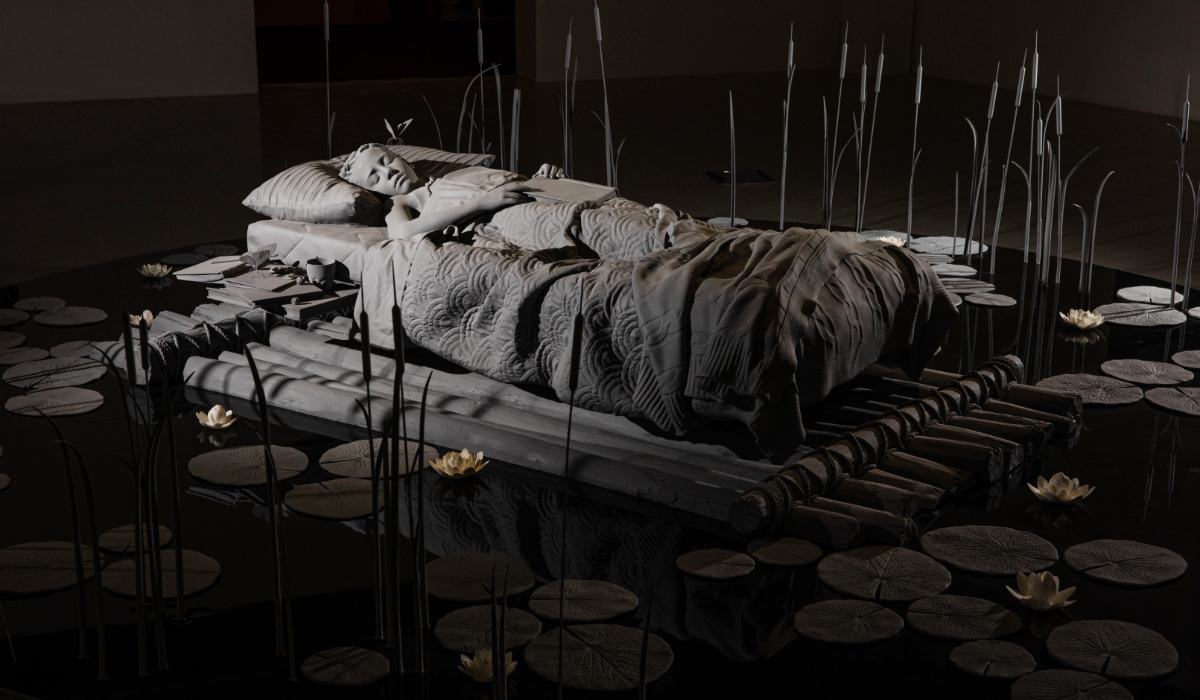
Hans Op De Beeck’s work titled ‘My bed a raft, the room the sea, and then I laughed some gloom in me.’ (Supplied)
Polish artist Katarzyna Wiesiolek’s “Light Pillars” is inspired by the grandiosity of the cosmos. She hand draws the pieces using some of the darkest pigments she can find. After stripping the paper of its first layer to create a morse absorbent surface, she applies the powder to the canvas.
The work features strobes of light descending into pitch-black, transporting the viewers into liminal space commanded by the stars and skies.
HIGHLIGHTS
• Curated by Geraldine Bloch, ‘In the Night’ exhibition features over 30 artists from across the globe including France, Morocco, Tunisia, India, and Japan.
• Saudi artist Hana Almilli’s ‘I’ve told my dreams to come, and they came,’ is also featured.
Wiesiolek is drawn to the multidimensionality of darkness: “Night for me is a kind of comfort. The coziness of being by yourself is a comfort zone for me, but it can also be kind of scary. Night is also very silent, so you can hear sounds or see light much more than in the daytime.”
The artist draws from both scientific images and personal memories, the three works on display invoke a sense of powerful suspension and melancholy.
Artist Nadezda Nikolova has moved to drawing landscapes after having photographed them for so long. Similarly to Wiesiolek, she relies on memory to imprint the scene. Her “Elemental Forms” uses paper masks, brushes and various manipulations via the early photographic collodion process to transfigure the images of a mysterious nature.
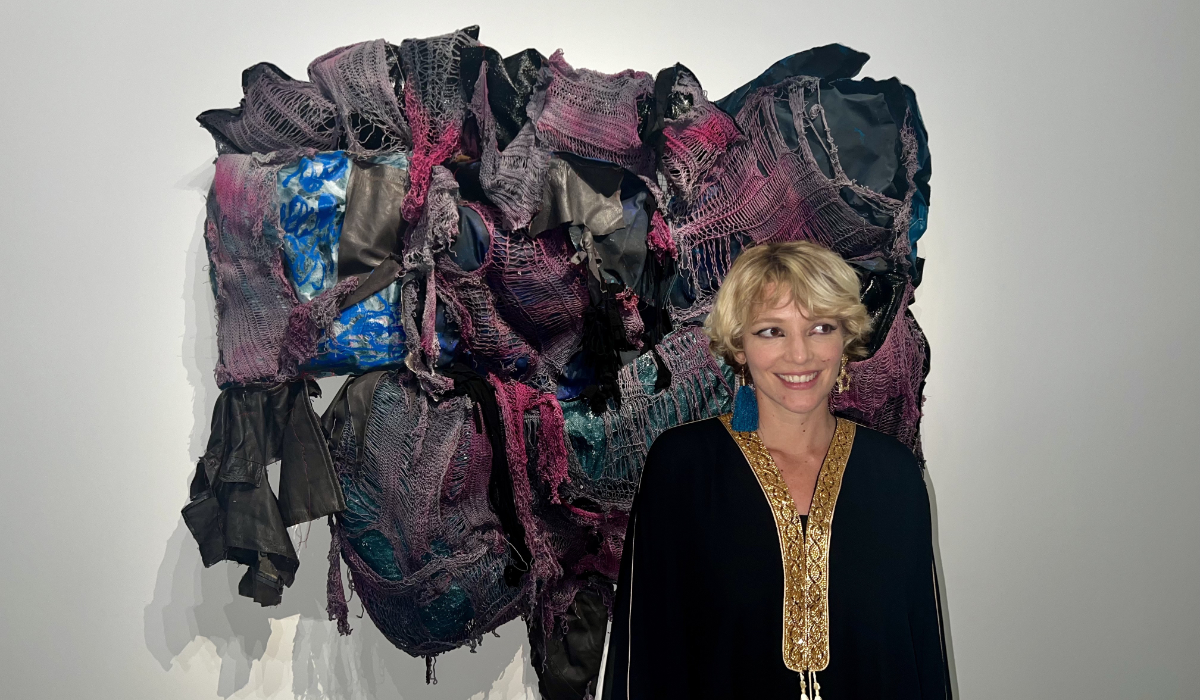
Claudia Tennant, South African artist. (AN photo)
She said: “The night is never devoid of a source of light, and within that there’s a sense of safety that we can trust — that we’re not alone.
“It’s a time of dreams and visions, and a time where you can open your aperture and look towards the cosmos and connect to that sense of a larger reality and we’re part of it.”
Textiles often hold memories. They carry your history.
Claudia Tennant, South African artist
She celebrates her intimate bond with nature by using it as a source of inspiration. “Nature has this purity and it is so much easier to connect with that source than, for example, an urban space,” she explained.
The work is less about transcription or documentation and edges more towards becoming an “embodied camera” for sensory information. After spending time in a particular spot, absorbing all its majestic detail, she works quickly to produce the pieces in layers of exposure.
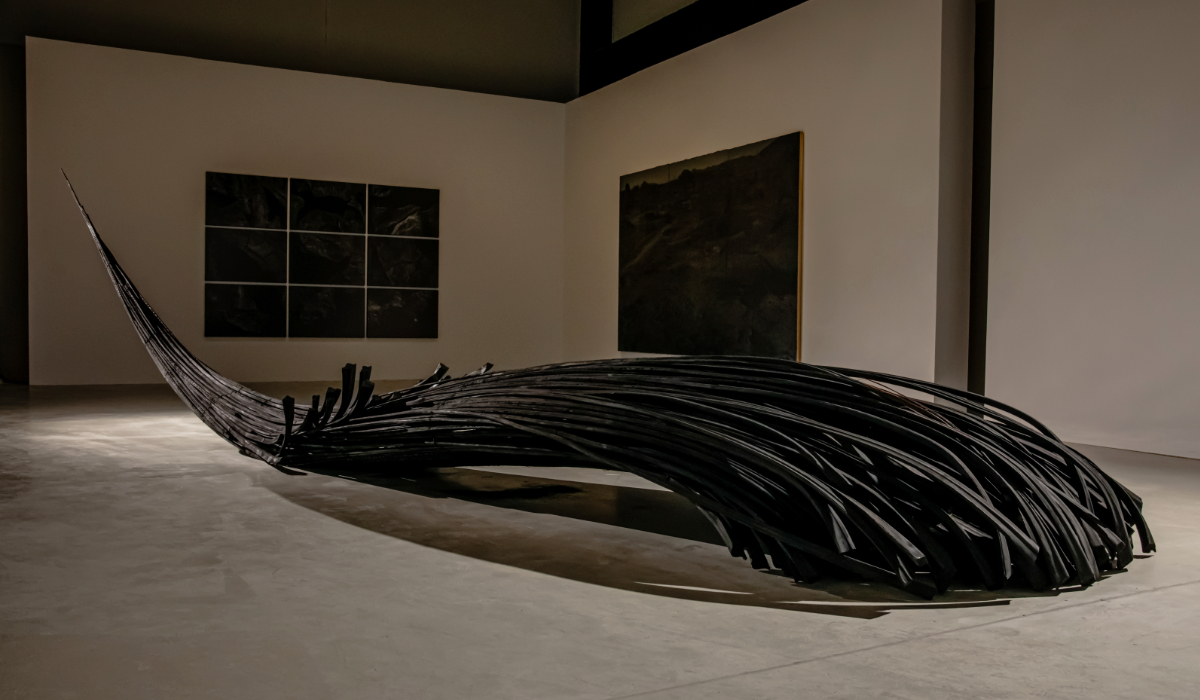
Mohannad Shono’s “A Song of Silence” draws inspiration from ancient and nearly immemorial narratives and myths. (Supplied)
“Wet plate collodion dries in three minutes, and once it’s dry I can’t use it …You have to rely on instinct, and that comes from a lot of repetition and just your intuitive sense,” Nikolova said.
She sometimes has to strip away some details to create a more universal experience within her work — in a way, the art essentially lies in the process itself and its adaptation.
South African painter Claudia Tennant also creates textile art. At the exhibition, she is presenting her artwork “I’m Sorry,” a multi-material textile creation in which colors and threads pile up and contort, inflate and stretch as living beings do.
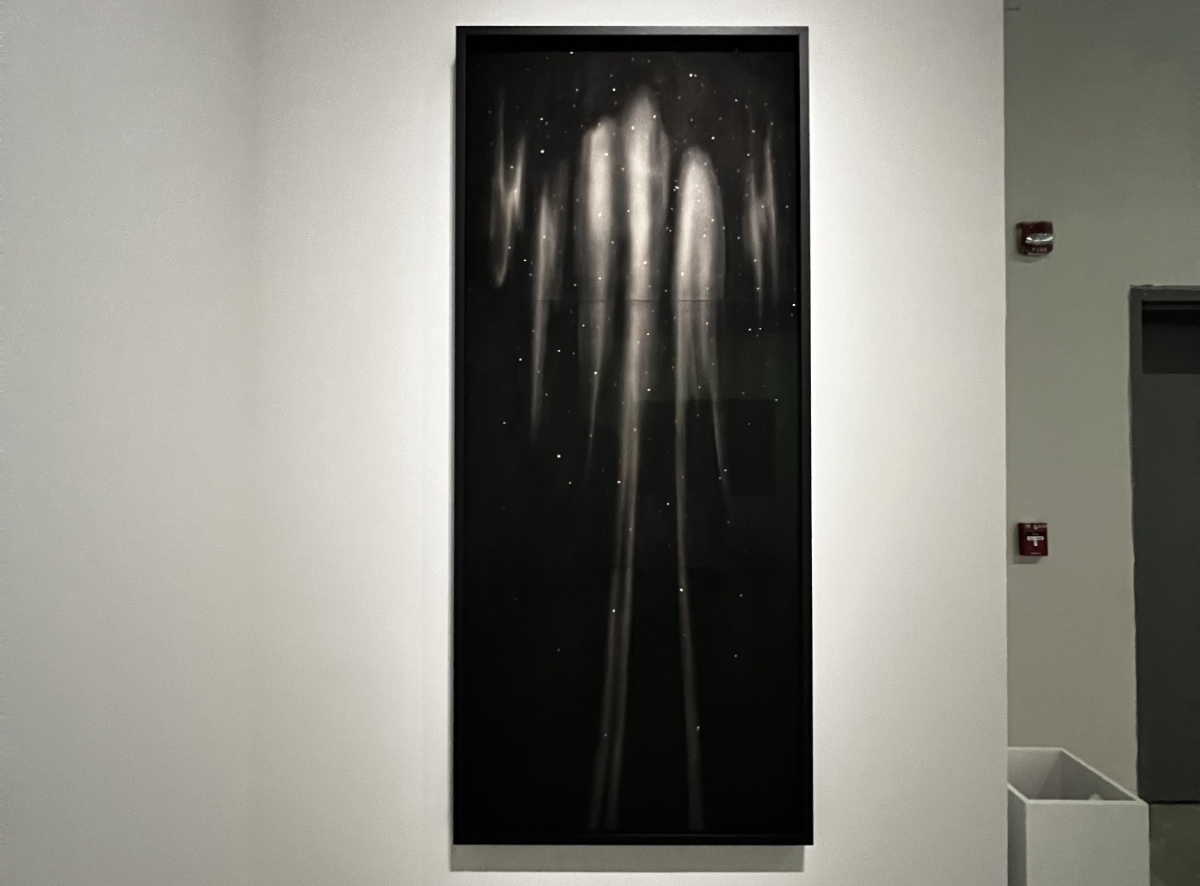
Polish artist Katarzyna Wiesiolek’s “Light Pillars” was inspired by the grandiosity of the cosmos. (AN photo)
“There’s this idea of having traversed something: those lower painful emotions like fear, guilt come up, and you go through that and come out the other side,” she told Arab News. “Textiles often hold memories. They carry your history.”
The piece appears organic and the knitted fabric becomes a net. The bulky piece comes undone in some places and tightly intertwined in others. It features multiple fabrics and colors, including construction bags peeking out of the knits, demonstrating the duality of the roughness and softness of human beings.
The piece, which was completed during the nighttime hours, almost comes together in celebration of all that encompasses Tennant’s victories and defeats.

Vladimir Skoda’s “From Within” places 21 spheres in an ellipse in question of the invisible and inaccessible heart of matter. It challenges the viewer to perceive beyond the lifeless matter. (Supplied)
French-Moroccan artist Mustapha Azeroual uses a monochrome photography process called gum bichromate that dates back to the 1850s. Azeroual walked for five days in the Moroccan Atlas Mountains and patiently captured the landscape from various angles, ultimately leading to his series “Ellios,” which means “sun” in Greek.
He told Arab News: “Light makes things visible, but it’s invisible. It gives us the capacity to see. The sensation you feel through an artwork is more than visual.”
By using the inverted image of the sun hitting the range, it creates an artificial night-scape and focuses on the light we cannot see.
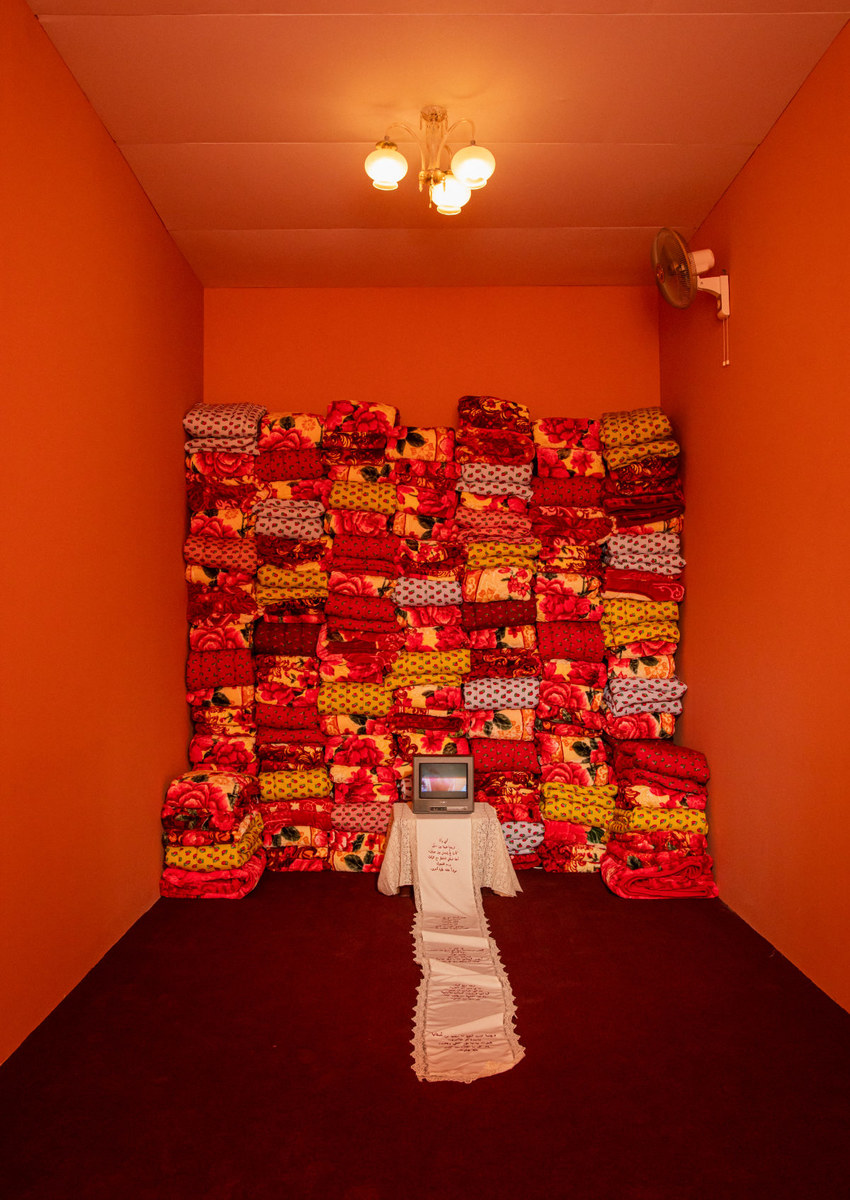
The “In the Night” exhibition showcases immersive installations including Saudi artist Abeer Sultan’s “The Reparation of a Lost Tooth”. (Supplied)
“What I want to show is not the mountain, but the light that highlights it. The negative film is the first recording of light ever made,” he said.
“In the Night” is a culmination of cosmic nights, energy, abundant evenings, and dreams. Each artwork is a star that traces the exhibition’s constellation.
It showcases poetic creations like the work of Saudi Hana Almilli’s “I’ve told my dreams to come, and they came,” and Arwa Alneami’s “Sound of Cardamom,” as well as immersive installations including Abeer Sultan’s “The Reparation of a Lost Tooth” and Mohammed Alfaraj’s “Did you hear that?”
The exhibition runs until the end of May 2024.





























